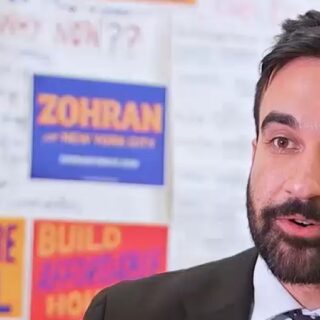
Many trends in terrorism in the Russian Empire foreshadowed trends in European terrorism in the late 20th and early 21st centuries.
Already during Europe’s <<Era of Dynamite>> from 1870-1914, terrorism in Russia between 1866-1911 was clearly different from terrorism in European countries.
Russia and the European <<Era of Dynamite>>
The massiveness of terrorism in Russia leaves no room for doubt about how terrorism had become part of political life in Russia as compared to European countries.
Casualty figures for terrorism in European countries were large. Dutch researcher Beatrice DeGraaf estimated that anarchists between 1880-1914 killed 160 people and wounded more than 500 people in Europe and the United States.
Nationalist terrorists, especially in the Balkans, killed even more people. For example, Macedonia had a population of 3 million in the early 20th century. In 1907, British diplomats estimated that there were 1,370 cases of violent deaths in Macedonia — four victims per day.
Terrorism in the Russian Empire between 1860 and 1900 took the lives of about 100 people, including Tsar Alexander II in 1881. These numbers appear insignificant compared to the number of victims between 1901-1911. Russian terrorists broke all European records for terrorism.
American historian Anna Geifman gave the following calculations on the massiveness of terrorism. Between October 1905 to the end of 1907, the number of government representatives — both civilian and military — reached 4,500. Victims from the general population included 2,180 killed and 2,530 wounded. The total number of victims was more than 9,000.
Between January 1908-May 1910, the government recorded 19,957 terrorist acts and revolutionary robberies–<<expropriations>>. The dead included 732 government persons and 3,051 private persons and the wounded included 1,022 government persons and 2,829 private persons. The number of victims was 7,634.
Geifman estimated that the total number of victims of revolutionary terrorism between 1901-1911 was about 17,000. This record remained unbroken until the late 20th century in Europe.
The continuity of terrorism in Russia also made Russian terrorism distinct from European terrorism during the <<Era of Dynamite>>. Although there were periods when terrorism was not used, terrorism never vanished from the agenda of Russian revolutionaries. As well, Russian terrorists forced all political parties and movements to determine their attitudes toward terrorism and the government’s attempt to suppress terrorism.
Unlike terrorists in Europe, Russian terrorists could rely on the support of liberals and the ambivalence of conservatives to continue terrorist activity.
Foreshadowing the Future of Terrorism in Europe
Only by studying terrorism in the Russian Empire in the context of the history of European terrorism during the <<Era of Dynamite>> can we understand just how much Russian terrorism foreshadowed many trends in European terrorism, especially from the late 1960s to the late 1980s and in the years following the collapse of the Soviet Union in 1991 and continuing to the present.
The factors that enabled the massiveness and continuity of terrorism in the Russian Empire became the trends that foreshadowed trends in European terrorism. Of course, terrorism emerges and develops in specific historical conditions in different countries, regions, and periods, but by using a historical approach we can determine elements of continuity and change between Russian and European terrorism. As noted in the previous article, European terrorism has gone through several stages:
- A preliminary stage from approximately 1800-1870.
- The first stage—the <<Era of Dynamite>> between 1870-1914.
- The second stage runs between the end of World War One in 1918 and the beginning of World War Two in 1939.
- World War Two and the years following to the early 1950s.
- The late 1960s to the late 1980s in Western Europe and Turkey.
- The current stage of European terrorism began after the collapse of the Soviet Union and other Communist states from 1989-1991.
The major trends in Russian terrorism foreshadowing many trends in European terrorism especially from the late 1960s to the present include:
- The existence of the socialist intelligentsia as the most radicalized social stratum. The only goal that the intelligentsia pursued was the destruction of the political-social order. The intelligentsia was the mass base of leaders and members of terrorist organizations. Many contemporary terrorist movements in Europe and elsewhere have drawn and still draw their basic pool of participants and supporters largely from perpetually discontented elements, especially from intellectuals, professional people, and students. Terrorists are not poor and uneducated people. It requires a very high degree of education and expertise to become a terrorist leader or participant.
- The process of radicalization through which the intelligentsia continually replenished its ranks. Strata most radicalized included university and other postsecondary students, secondary school students, women, members of ethnic and religious minorities. These groupings comprised the mass base of Russian terrorists. Modern terrorist groups beginning in the late 1960s in Europe also devote much attention to the radicalization of certain strata, especially along age, ethnic, religious, and political In Russia, radicalization was usually done by informal self-education circles. The radical setting created a new community for revolutionaries with its own sources of information, viewpoints, and rituals. Modern terrorist groups generally use Internet social media for radicalization and create a new community for their followers. In fact, many violent and non-violent radicals today largely draw their information exclusively from social media and have created their own visions of reality. Conspiracy theories play a large role in their construction of reality.
- Joint terrorist operations by groups from left-wing political parties and movements. This tactic of a united front of terrorists stood in sharp distinction with the attempts of party leaders to draw sharp boundaries between parties. Terrorists and other members of left parties and movements believed that party leaders had no right to dictate tactics to people who were risking their lives for the revolution and that only a united front of the left could overthrow the government. In Russia, this united front tactic applied only to the Modern terrorist organizations from completely different political orientations often conduct joint operations with the complete approval of their leaderships. Even when terrorists do not conduct joint work, they still share a common goal of destroying the existing political-social order. As American scholar Jeffrey M. Bale noted, both rightist and leftist groups in Europe from the 1960s-1980s deliberately used terrorism to provoke governments into increasing repressions. Rightists hoped to establish a dictatorship, while leftists hoped that increasing repression would finally trigger a mass revolution. Terrorists in the Russian Empire called this tactic <<the worse it is, the better>> [чем хуже, тем лучше]. In other words, the worse it is for the people, the better it is for us revolutionaries. This mentality of making the present situation worse allows radicals of all types to convince their followers that a new age is coming.
- Conducting a continual information war beginning in the 1880s to mobilize support and sympathy among socialists and liberals in Russia, Europe, and the United States. Terrorists and their supporters presented terrorists as people fighting for the freedom of Russia and blackened the reputation of the Russian autocracy. Many modern terrorist organizations widely use the mass media, especially on the Internet, to create a positive image of themselves as victims of oppression and martyrs for a just cause and create negative images of their opponents. Many terrorist sites conduct radicalization online, recruit new followers, and create virtual organizations.
- The criminalization of many political movements, especially many liberals, through their support of terrorism. Russian terrorists could also count on the ambivalent attitudes of many conservatives, far rightists, and other usual supporters of the governments in its fight against terrorism. The result of the criminalization of liberals and the ambivalence of the right-wing camp was a steady shrinking of the government’s base of support. In the late 20th century, particularly in Western Europe, many leftist terrorist organizations received the sympathy of many law-abiding liberals and large support of their leftist comrades from Communist and Socialist parties. Supporters of the terrorists often opposed government anti-terrorist measures and regarded these measures as the first step toward massive violations of human rights. This fear was widespread in West Germany and Italy because many people feared that harsh measures against terrorism would lead to the restoration of National Socialism and Fascism. In fact, this fear was exactly what terrorists in West Germany and Italy wanted—that society would see contemporary governments merely as masks for National Socialism and Fascism and that these governments deserved to be destroyed.
- Deliberately using terrorism as a tactic to provoke the government into conducting more severe repressions and consequently igniting a revolution. Rightist and leftist terrorists used this tactic in Europe. Islamist terrorists hope to provoke Western countries into stepping up persecution of Muslims and thus paving the way for a final battle between Islam and Christianity. This longing for speeding up the end of the present situation is a form of eschatology — a teaching of Zoroastrianism, Judaism, Christianity, and Islam about the coming end of the world and the coming of a new age. Beginning with the French Revolution and the rise of political ideologies, eschatology took on political overtones. Eschatological concepts of a cosmic battle between good and evil forces powerfully influenced political terrorism in the Russian Empire along with all other revolutionary and oppositional movements across the political spectrum.
- Russian terrorists also took huge steps in globalizing their cause. They would carry out terrorist attacks in foreign countries to destroy their Russian and foreign enemies. Some anarchists thought that they should and could attack representatives of governments and propertied classes in all countries. This represented a major violation of the right of political asylum and an implicit ban on committing terrorist acts against the governments and societies of host countries. Russian terrorists received money and weapons from supporters in different European countries. They also made contacts with local extremists and terrorists and with diaspora communities from the Russian Empire in many countries. Diaspora communities are people from different ethnic and religious groups living outside their traditional homelands. Russian terrorists were following the examples set by many European terrorists. For example, Irish terrorists often relied on the financial support of Irish Americans, while anarchists had networks of supporters among diaspora communities in North America and Latin America. Beginning in the late 1960s, European terrorism went through an intensive globalization. Palestinian, Latin American, Japanese, and terrorists from other parts of the world conducted terrorist attacks against their homelands or against European targets. Islamist terrorists in Europe from the late 20th century to the present radicalized and recruited new members from the largest Muslim communities in many countries.
However, terrorism in the Russian Empire had some major differences from European terrorism. The next article will examine these differences. Many of these differences can be traced to the specific historical conditions of Europe from 195 to the present. In many ways, terrorism in European countries is one major aspect of the politics of people who have become disillusioned and disenchanted with traditional political institutions.
Citations
- De Graaf, Beatrice. The Black International Conspiracy as Security Dispositive in the Netherlands, 1880-1900. 2. Historical Social Research / Historische Sozialforschung , 2013, Vol. 38, No. 1 (143), Security and Conspiracy in History, 16th to 21st Century (2013), pp. 142-165.
- Gawrych, George W. The Culture and Politics of Violence in Turkish Society, 1903-14. Middle Eastern Studies, Jul., 1986, Vol. 22, No. 3 (Jul., 1986), pp. 307-330.
- Geifman, Anna. Thou shalt kill: revolutionary terrorism in Russia, 1894-1917. Princeton NJ: Princeton University Press, 1993. Русский перевод в электронной форме. Гейфман, Анна. Революционный террор в России, 1894— 1917. Москва: КРОН-ПРЕСС, 1997. http://royallib.com/book/geyfman_anna/revolyutsionniy_terror_v_rossiihtml
- Bale, Jeffrey M. Right-Wing Terrorists and the Extraparliamentary Left in Post-World War II Europe: Collusion or Manipulation? Berkeley Journal of Sociology, vol. 32 (1987), pp, 193-236.





